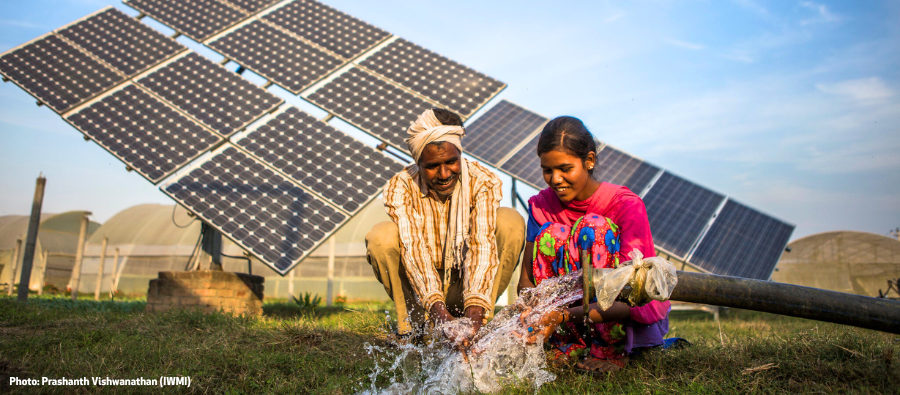As the global population continues to grow, the world is facing increasingly complex challenges in ensuring that everyone has access to healthy, nutritious and sustainable food. Finding innovative solutions to these challenges is critical.
However, many complexities associated with the innovation process go far beyond technical advances which, although they may “work”, are unviable or simply unworkable in some contexts. As such, scaling-up food system innovations may require a range of different accelerators.
Innovation accelerators
Stakeholder dialogue can help to promote the acceptance of new and different ways of producing and handling food – ensuring that it is implemented transparently. Green and socially responsible public and private financing that does not reinforce existing inequalities may also be needed, as well as market incentives to help spread the costs and trade-offs associated with a particular innovation.
Governments may also need to change their policies and regulations to ensure appropriate supervision of new technologies and industries with respect to health and safety standards, for instance. Above all, any undesirable effects of innovations need to be safeguarded against, the impacts of uptake monitored and corrections made where necessary.
Technical innovations for future food systems

Examples of green ammonia applications in the future.
Clim-Eat’s latest Discussion Starter focuses on ten game-changing innovations that could transform the future of food and farming. These innovations have the potential to make our food systems more sustainable, inclusive and climate-smart, with a particular focus on small- and middle-income countries.
Green Ammonia: Globally, some 180 megatonnes (Mt) of ammonia is produced every year, of which around 80 per cent is used as fertiliser. Its production involves a highly energy-intensive process and results in nearly two per cent of global carbon dioxide emissions. Green ammonia, instead, is an innovative fertiliser made without using fossil fuels that could help reduce greenhouse gas emissions from agriculture. This is a particularly promising development for farmers in small and middle-income countries who have limited access to fertilisers to increase yields.
Protein Fermentation: Protein fermentation is a process that utilizes hydrogen-oxidizing bacteria inside a bioreactor, to produce a protein-rich powder that can be incorporated into various food products. It is a promising innovation that could use renewable energy and support nutrition, ultimately reducing the environmental impact of food systems.
Low-Tech Urban Food Production: In higher-income countries, urban agriculture is attracting major investment and interest. However, urban agriculture does not have to be technologically advanced to be effective. Utilising renewable energy sources to power high-efficiency LED lights or using simple greenhouses rather than vertical structures are two examples of low-tech improvements in urban farming. The use of simple and accessible technologies in urban agriculture can allow people to grow their food locally, especially in low- or middle-income countries (LMICs), while reducing food miles and increasing food security in urban areas.
Off-Grid Renewable Energy Storage: Innovative energy storage solutions could help ensure a more reliable and sustainable energy supply for farming communities. Currently, most energy storage relies on Li-ion battery technologies, which are primarily suitable for short-term storage. In regions where access to electricity is limited or unreliable, thermal storage, for example in the shape of sand batteries, could provide longer term storage of renewable energy to be used when needed on-farm.
Farm-to-Fork Virtual Marketplace: These virtual marketplaces, often smartphone-based, are online platforms that connect farmers and consumers, providing a direct link between producers and consumers. They provide a mechanism for farmers and end-users to bypass existing fragmented and inefficient value chains and increase the transparency of the food supply chain.
Edible and Biodegradable Food Packaging: There have been multiple developments around innovative packaging solutions that are not only biodegradable but also edible. In most cases, biodegradable material is applied as an edible wrapping or coating around the food. In addition, edible packaging can interact with the food it contains, facilitating the release of antimicrobials and antioxidants or removing harmful gasses such as oxygen and water vapour, which can decrease product quality and shelf life. As such, they not only reduce the environmental impact of packaging waste but also have the potential to reduce food loss and waste.

Urban farming in action. Photo: © 2021 Alianza de Bioversity International y CIAT/Juan Pablo Marin García
Supporting innovations
While the Discussion Starter focuses on just six technical innovations, there are very many other innovations at different stages of development, some of which may in time have profound effects on our food systems. Similarly, there are many “supporting” innovations that could facilitate their uptake and implementation at scale. For example:
New Models for Public Agricultural Research for Development: The use of swarm intelligence to develop new models for agricultural research and development can be more efficient, participatory and responsive to the needs of local communities.
Food System Databases for Monitoring and Correction: Data-driven tools can monitor and correct inefficiencies and shortcomings in our food systems.
Informing the Development of Transition Pathways: Innovative tools can enable policymakers and stakeholders to develop transition pathways towards a more sustainable and climate-smart food system.
Applying Behavioural Science to the Challenges of Food System Reconfiguration: Behavioural science can encourage political and individual action.
Looking ahead
As many of us tire of the slow progress of efforts to tackle climate change and transform food systems, it is important to remember that there are talented innovators out there developing groundbreaking ideas. At the same time, there will be no magic bullet when it comes to transforming food systems.
Instead, we will see the growth of multiple innovations on multiple fronts and in multiple contexts. These innovations give a glimpse of what is already emerging and provide a welcome ray of hope that the world can rise to the challenge.





Comments
Thanks for this great innovation